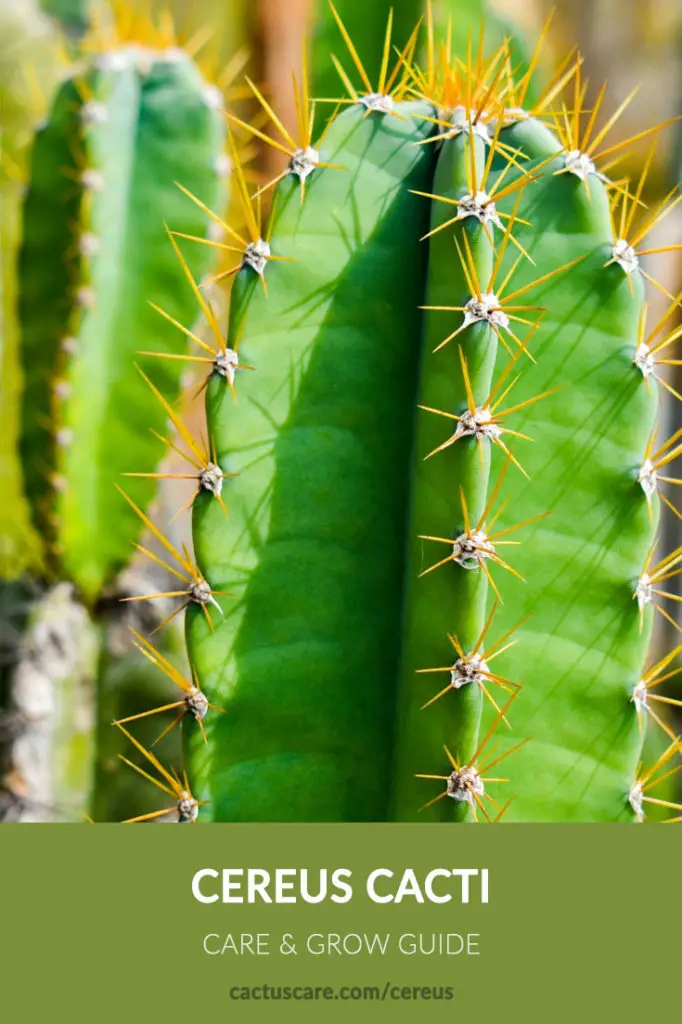
Cereus Cactus
- Light: The Cereus cactus loves bright light, and it thrives under full sun and partial shade.
- Water: This cactus needs thorough watering during its active growth stage, although you need to let the soil dry out in between waterings. In the winter, minimal watering is needed.
- Temperatures: This cactus likes it warm. Ideal temperatures from spring to fall are between 70° and 95°Fahrenheit (21° to 35°Celsius). During winter, it can tolerate temperatures as low as 50°Fahrenheit (10°Celsius).
- Fertilizer: Throughout the growing season, feed with half-strength slow-release fertilizer.
Ideal Potting Medium for a Cereus Cactus
Proper care for a Cereus cactus always begins with using the right type of soil.
This plant requires well-draining, gritty soil. As such, a good commercial cactus and succulents mix would be a great choice.
This typically ensures that your soil is pest-free and sterile. Many commercial potting formulas also have a mild starter fertilizer mixed in.
It would also be good to add a little bit of sand to loosen up the potting mix more and improve its drainage further.
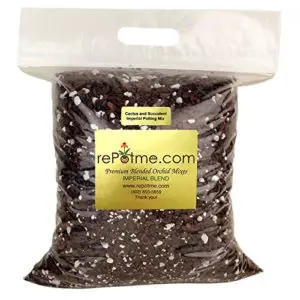
I recommend this wonderful cacti soil mix by repotme. It is easy to use and very well draining.
- High Quality Mix, Handcrafted in small batches
- Blended With Monterey Pine Bark from New Zealand, Red Volcanic Rock, Diatomite, and Premium Grade Pumice.
If a standard commercial potting mix for cactus and succulents is not available, or if the one you got retains much more moisture than needed, you can simply make your own.
Never use soil that does not drain well and that retains moisture as it will only cause your plant’s roots and stems to rot.
How to Make Your Own Cactus Potting Mix
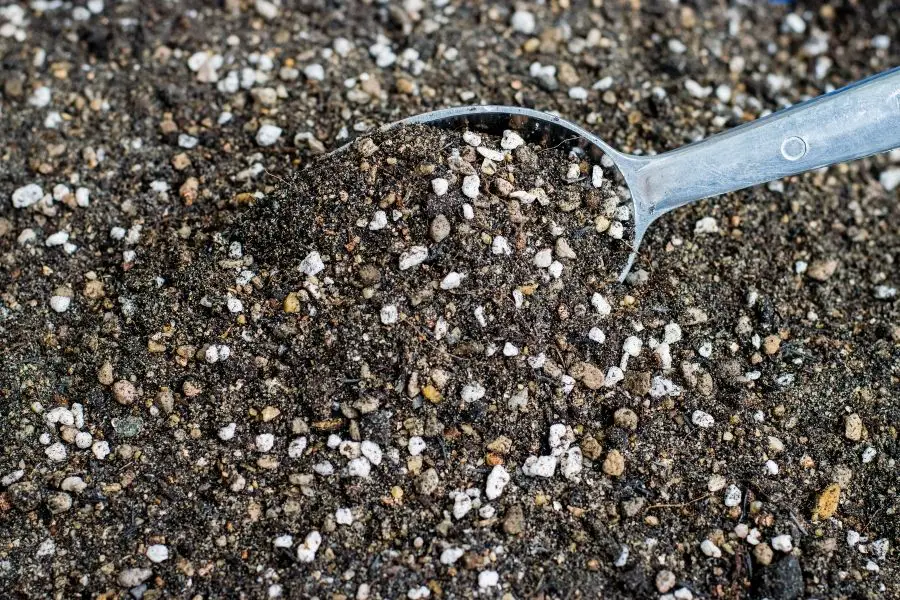
To make your own potting soil for your cactus, you will need to combine equal parts ground fir bark and peat moss in a bucket.
This creates a base potting mixture for desert cacti.
You can then mix equal parts of this base potting mix with perlite, coarse sand, pumice, or vermiculite.
Make sure you evenly blend all these ingredients and break up large clods.
Water the mixture in a bucket before you fill up your pots.
This should allow the peat moss content to absorb the water for an hour.
Watering Requirements
The Cereus cactus is susceptible to root rot, so it needs to dry out in between waterings completely.
The best way to make sure you don’t overwater it is to check the soil.
Stick your finger or a toothpick into the soil and see if it is dry. If it still feels a little moist, or if the toothpick gets a little damp, you can hold off a day or two before watering your plant again.
Otherwise, proceed to watering the soil thoroughly.
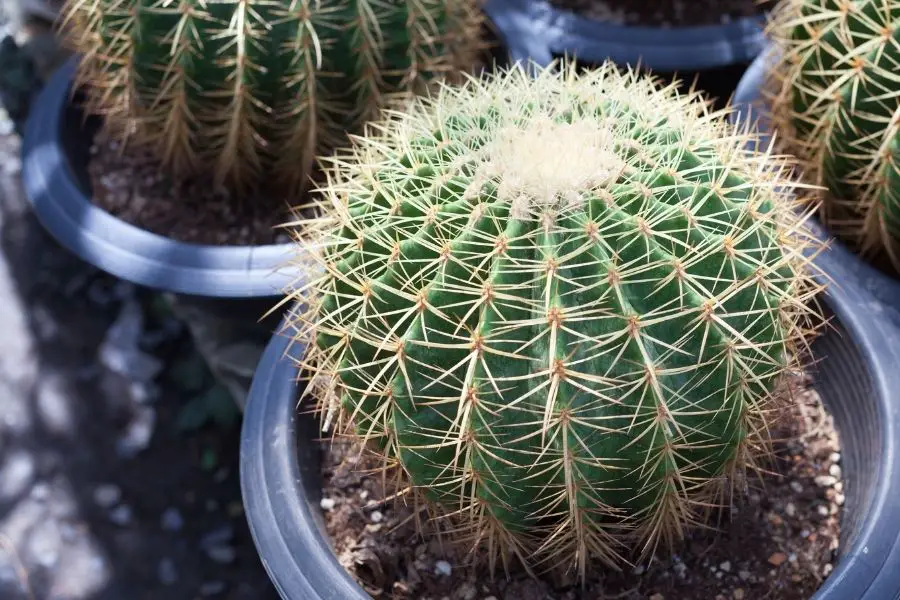
Spring and summer are considered to be the active growth period for this cactus.
During this phase, the plant requires more water to support its new growth and support flowers and fruits’ production.
Thus, you will need to increase the frequency of your watering slightly.
Keep in mind that at any given time, plants that are in containers will also need more water compared to those that are in open soil.
In the fall, gradually decrease your watering to prepare the cactus for the winter, when its gets on full dormant mode.
You may have to water your cactus only once a month when it gets really cold.
And the only reason you would need to is to keep its stems from shrinking.
How to Water Properly
Water your plant at soil level to avoid wetting its body.
For big plants that grow in open soil outdoors, you can use a hose, and for smaller plants in pots, you can use a watering can.
Ensure that the entire soil area is thoroughly wet by watering slowly until you can see the water running out of the pot’s drainage hole.
If you have a catch basin or tray, throw away all the excess water.

Pouring water slowly around the plant’s center is more effective because it ensures that it filters down the pot’s base.
It also ensures that the water doesn’t just run down the plant’s root ball’s outer portion and leaves its central root dry.
This happens if you dump too much water into the plant at once or water it too quickly.
The key is for water to get to the root zone.
Check the soil to know whether it’s time to water your plant again.
You can dip your finger one to two inches (three to five centimeters) into the soil to see if it is completely dry.
If you can still feel some moisture, then that means it’s not yet time for another watering.
Sun and Lighting Requirements
The Cereus cactus loves being in high light conditions and prefers being exposed to direct sunlight, so it thrives in the summer.
It can also handle being in partial shade.
If you are growing your plant indoors, it is recommended that you place it by a bright, sunny window, such as the ones facing the south and the west.
Better yet, take your plant outdoors for extra sunlight and fresh air from the spring to autumn, and only take it back into the house during winter.
It is best for a potted plant to rotate it periodically, like every week or two, to allow all sites to get some sun and photosynthesize efficiently.
This ensures a balanced growth, as well as prevents sunburn and discoloration on one side.
Temperature and Humidity
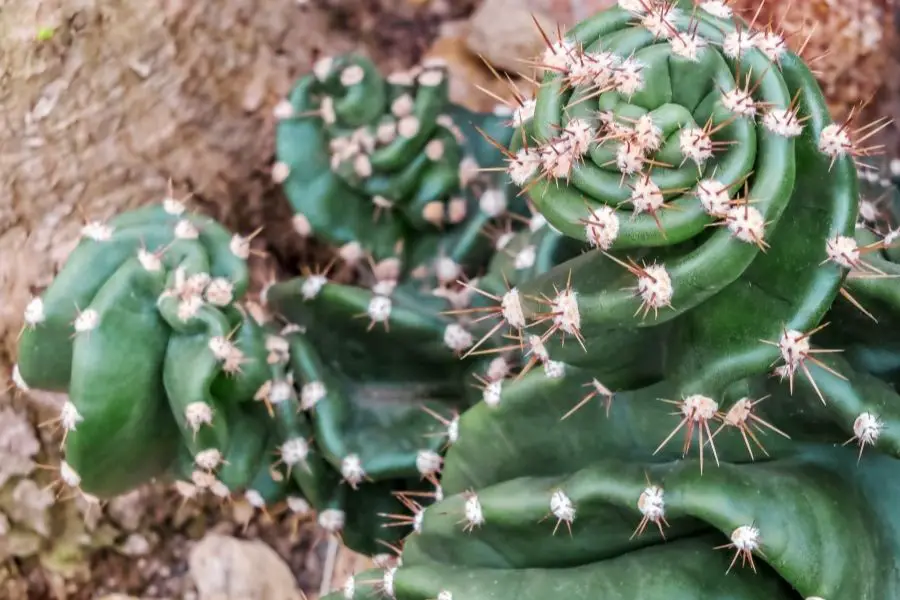
Cereus cacti like low humidity. It also wants hot temperatures from spring to fall. Temperatures of 70° to 95°Fahrenheit (21° to 35°Celsius) are ideal at this time.
However, in the winter, the plant can only tolerate temperatures as low as 50°Fahrenheit (10°Celsius).
Fertilizer Requirements
Fertilizers are available in granulated or liquid form, and you can choose slow-release organic or synthetic ones.
Determine which form and application method suits you and select a product that offers a nutritional balance for cacti and succulents.

We recommend this fertilizer, designed specifically for cacti. Make sure to follow the instructions and not use too much fertilizer.
- Provides calcium and other nutrients to your cactus
- Mix 1 teaspoon per gallon of water and apply as a soil drench to the base of a plant
- Feed plants and flowers every 2 weeks during the growing season
- NPK 1-7-6 fertilizer Analysis
You can boost your plant’s growth and supplement the soil by applying a slow-release organic fertilizer during the growing period.
And because this granular fertilizer would speed up growth, you may need to transfer your cactus to a bigger pot in no time.
A slow-release fertilizer is an especially good choice for plants in containers.
One application can usually give plants adequate nutrition all season long.
You can also use a general-purpose fertilizer for household plants to feed your cacti or succulents.
However, you may have to dilute it to one-quarter of the normal strength.
There is also a liquid cactus fertilizer that you can apply at half strength every ten days during the growing period.
Note that excessive fertilizer can actually damage your plant, so always follow the directions written on the package, especially as it pertains to the proper amount and frequency to feed your plant.
The proper time to feed your Cereus cactus with fertilizer is during its growing season.
Stop applying fertilizer in the fall and winter when the plant goes dormant, and its growth slows down.
Planting, Growing and Maintaining a Cereus Cactus
First, you need to decide where you want to grow your Cereus cactus.
- Will you be planting it directly into the soil outdoors?
- Will you be planting it into big pots in your garden?
- Or will you grow it in a container indoors?
If you are planting it in a container, make sure it has an ample drainage hole.
Fill the planter with potting mix up to two inches (five centimeters) from the rim. In the center of the soil, dig a hole that is large enough to support your plant’s root ball.
Place the plant in the hole and cover the root ball. Firmly press the soil around the roots using a spatula, stick, spoon, or another utensil.
Be sure to wear garden gloves, preferably leather ones, to protect you from the spines of the cactus.
For seedlings or tiny plants, you can wear rubber gloves or use kitchen tongs.
Repotting

Repot your Cereus cactus every couple of years.
Unless the roots of your cactus are pot-bound, you can use the same container.
This will still be a good chance to replace the old soil with a fresh new batch of potting medium and inspect the plant’s root system.
However, as your cactus matures, it is normal for it to outgrow its pot eventually. If this is the case, you will need a larger container.
Make sure to choose a new pot that is not more than one to two inches (three to five centimeters) larger in diameter than the current pot.
Knock away the old soil from the plant’s roots, trim away the dead roots, and transplant into the new container filled with fresh, well-draining potting mix.
Wait for one to two weeks before you water your newly repotted cactus.
Pruning
You can prune your cacti and succulents to maintain a specific shape or size or remove its damaged or dead parts.
Trimming would encourage the growth of new branches and more side-shoots.
It also lessens the demand for your cactus to develop a bigger root system.
As such, pruning is a good idea if your plant is in a pot, and the roots are in a confined space.
When it comes to the Cereus cactus, the best time to prune is in the fall. During this time, the plant stops forming new branches.
You can also prune it when it starts getting overgrown, and it gets hard to pick the fruits.
Pest Control
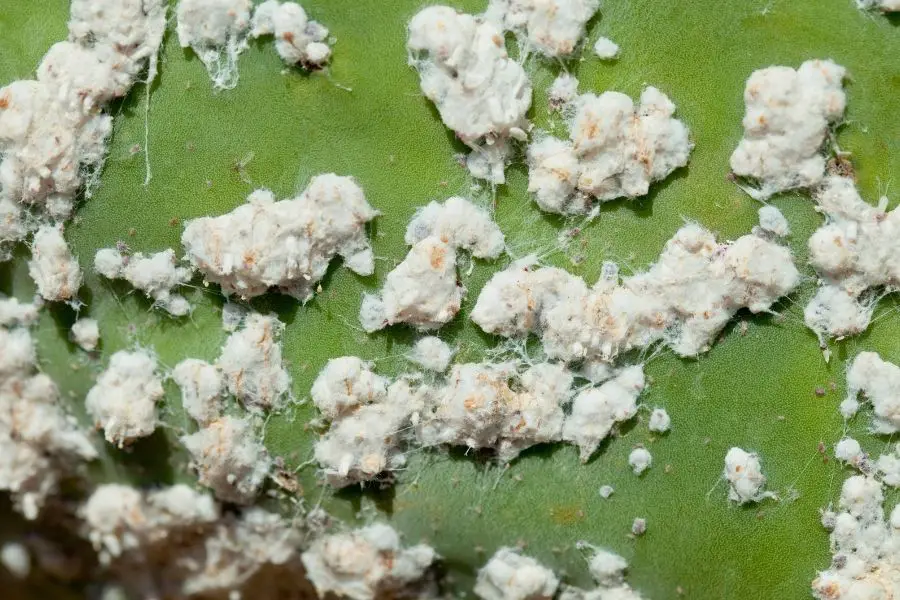
It is important to inspect your cactus regularly for tiny insects and pest infestations that may be difficult to spot from afar.
The most common pests found in Cereus cactus are mealybugs and plant scales. Less common ones are fungus gnats and spider mites.
You can control this pest infestation problem by using organic insecticides, which are available in gardening supply stores.
You can also try swabbing your plant with cotton balls soaked in rubbing alcohol.
Snails and slugs can also be a problem.
They may be trickier to get rid of since insecticides don’t work on them and they usually come out at night, but there are ways to do so organically.
One example is by spreading a barrier of eggshells on the soil.

We recommend this affordable, yet very efficient natural pesticide.
Made with natural ingredients, it works very well to get rid of common pests on your cacti.
- Ready to use, no mixing required
- Made with high quality essential oils and natural ingredients
- Very efficient
How to Encourage Your Cereus Cactus to Flower
The night-blooming Cereus cactus will not start to flower until it is mature enough, which is about four or five years old.
In the beginning, it will produce only a couple of flowers, but this will increase to more blooms through the years and as your plant gets older.
These flowers will form on top of the stems.
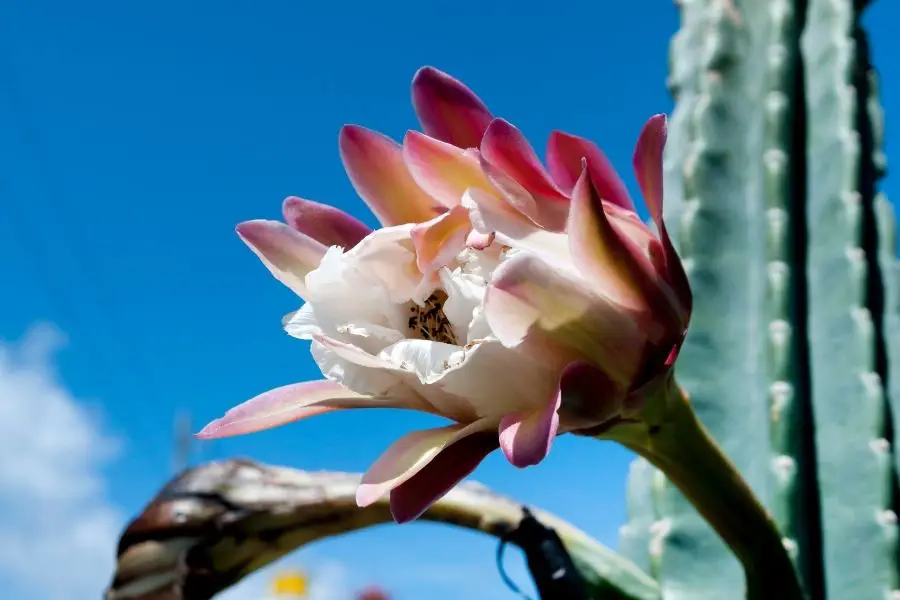
A Cereus cactus flower typically measures almost seven inches (18 centimeters) in diameter and has a nice fragrance.
It will only bloom at night, and only once, enough to allow pollination by a moth.
Usually, the flower will start to bloom at nine or ten in the evening and be completely open by midnight. It will close in the morning when the first sun rays cause its petals to wither and die.
If the flower has been pollinated, it will produce a big juicy red fruit.
Cereus flowers typically bloom from July to October.
After the flowering season, which is around fall and winter, it is best to reduce watering and do not fertilize the plant, so its growth slows down, and it will reserve its energy for fruit production.
Moreover, a rootbound Cereus cactus flowers more abundantly.
How to Encourage Fruit Production
The Cereus cactus blooms at night, so it is difficult for pollination to occur, even more so if your plant is indoors.
Pollination can still happen naturally, though, with the help of night pollinators like moths and bats.
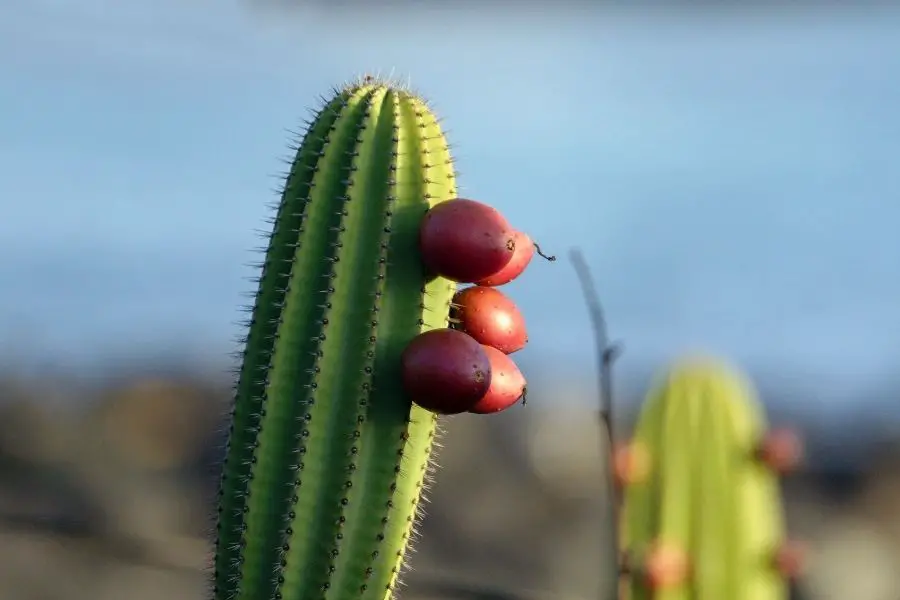
Given these circumstances, you may have to hand-pollinate your Cereus cactus flowers for fruits to form.
Check out this video tutorial on how to hand-pollinate:
If pollination is successful, you will see fruit starting to form around the start of the plant’s dormant period, from late autumn to early winter.
The Cereus cactus fruits are delicious and nutritious, so be sure to pick them when ripe. More specifically, the fruit is rich in vitamin C, beta-carotene, and fiber.
Cereus Cacti in the Wild
The Cereus cactus is a tree-like columnar cactus that boasts well-defined ribs lined with stout spines and large areolas. Its most distinguishing features are its big, fragrant funnel-shaped flowers that bloom at night and its apple-like fruits.
The Cereus cactus (Cereus peruvianus or Cereus repandus) is also known as the Queen of the Night because it is a night bloomer.
Some people also call it the Peruvian apple cactus because of its fleshy, apple-like fruit.
The word Cereus is from an Ancient Greek word that means candle or wax torch, referring to the plant’s cylindrical shape.
This South American native is a shrubby cactus variety that grows vigorously given the right conditions.
It has a distinct, columnar shape, and it can grow to a tree-like size or up 25 feet (7.6 meters) tall in its natural habitat.
It has upright ribbed stems that range from sea-green and gray-green in color and brown or black spines.
It will make an attractive addition to any desert-themed landscape because of the spiny texture and vertical lines that give it a sculptural appeal.
The plant also thrives in a container, whether placed indoors or outdoors. But it needs to be placed in a bright, warm, and low-traffic area because it has sharp thorns that can cause injury to you, your family, and your pets.
A mature Cereus cactus forms flowers that bloom open for only one night and wilt in the morning.
These flowers are large, funnel-shaped, and mostly white. The plant also bears small yellow to violet-red fruits with edible white flesh and crunchy seeds.
The texture is like that of dragon fruit, and it is delicious, although not with the same fragrant taste.
Frequently Asked Questions
Here are some of the most commonly asked questions about the Cereus cactus and the answers to these questions:
Why is my Cereus cactus leaning towards one side?
Your cactus may be leaning towards one side because this is the side that gets exposed to a good amount of sunlight.
To get it back to a straight position, rotate the pot and make sure the other side gets its fair share of sun exposure.
My Cereus cactus is turning brown at its edges. What would cause this?
Overwatering the cactus during the winter may have caused the discoloration. Stems turning dark brown or black and getting overly soft to the touch are signs of root rot.
Remember to water very sparingly during this period, and even during its growing season, water only when the soil has dried out.
You also need to make sure that you use well-draining soil.
You can cut off the affected parts then sprinkle or dust the open wound of the plant with sulfur.
You should also make sure that your plant’s cut surface does not have reddish, dark brown, or black spots.
This is because overwatering can also cause fungal and bacterial infection.
Will my Cereus cactus flower if I keep it indoors?
To promote abundant blooms, the best conditions and the best location for your Cereus cactus is outdoors, where the plant gets plenty of suns. It is not common to get the cactus to flower and produce fruits if you keep it indoors. But it isn’t entirely impossible as long as you give it the hot temperature and the amount of light it needs.
What does a Cereus fruit taste like?
The apple cactus fruit has a white flesh with a crystalline texture and is speckled with tiny black seeds that are crunchy. This seedy crunch is similar to that of kiwi fruit. The apple cactus fruit is juicy in a refreshing way, and it tastes delicious, with a sweetness that is likened to that of sugarcane.
Many say it tastes like dragon fruit, but with a fluffier consistency and a milder and more subtle flavor. They even say that this fluffiness melts in your mouth like shaved ice.
The fruit is said to be additionally refreshing when chilled in the fridge. Prolonged refrigeration, however, will make the fruit’s consistency sticky.
How else are the fruits consumed other than eating them raw?
There are other ways to eat the Peruvian apple cactus fruit. It can make into jam, and it can also make into juice and ice pops.
When are the fruits typically harvested?
The harvest season for the Cereus cactus fruits is usually in autumn or in the summer.
Do I need to mist my indoor Cereus cactus?
No, misting is no longer needed. Just make sure that you place your cactus in a well-ventilated room during the summer.
What plants or cacti make the best companion for the Cereus cactus?
When growing your Cereus cactus in a desert landscape, rock garden, or raised bed outdoors, the best companion plants for a Cereus cactus are barrel cactus, Euphorbia, and Senecio.
What does a dormancy period mean?
Dormancy is the period when a plant’s growth and metabolic activity slows down or stops. So during this period, you wouldn’t have to water or feed your plant. This dormancy period starts in the fall after the flowering period and lasts through the winter for a Cereus cactus. It is during this period that fruits begin to form.
Final Thoughts
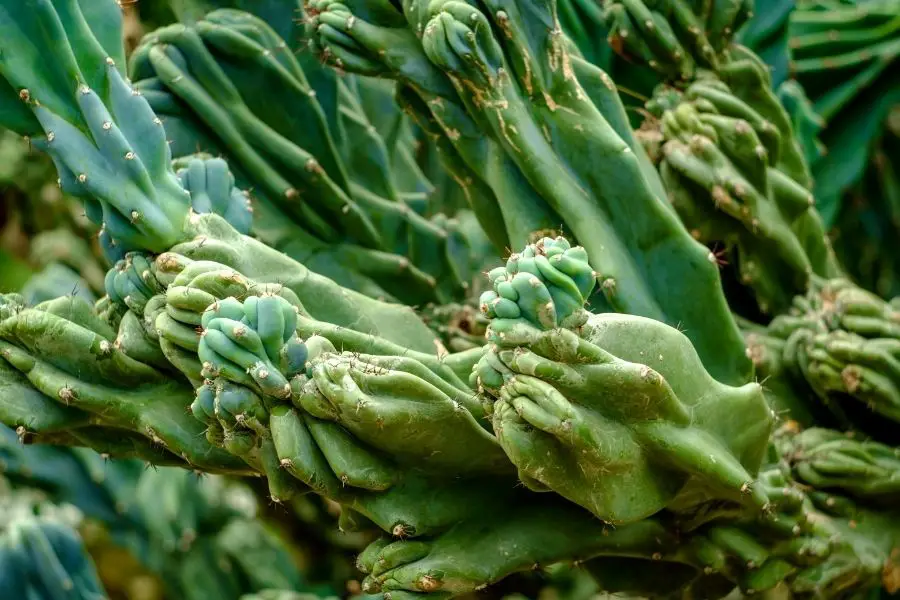
A Cereus cactus or Peruvian apple cactus is easy to care for and is generally a hassle-free plant.
It loves getting plenty of light and exposure to full sun, and it thrives in well-draining soil and just enough water to keep its stems from shrinking.
It can be grown in large pots and kept indoors, but because it tends to grow very tall and large, it is best planted outdoors, where growing conditions are most favorable.
Moreover, an outdoor location is ideal for promoting blooms and fruits.
The active growing season for this cactus is in the spring and summer, during which it needs frequent watering and periodic fertilizer. But during the fall and winter, you can pretty much leave the plant alone as its growth slows down, and it goes on dormant mode.